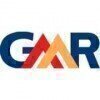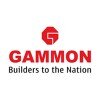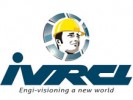Filter interviews by
K.K. Construction & Builders Interview Questions and Answers
K.K. Construction & Builders Interview Experiences
2 interviews found
Head Human Resource and Senior Manager Interview Questions & Answers
posted on 22 Oct 2024
I applied via Walk-in and was interviewed in Sep 2024. There was 1 interview round.
(2 Questions)
- Q1. Technical is required
- Q2. Department knowledge is required
Interview Preparation Tips
Interview Questionnaire
6 Questions
- Q1. Tmt formula
- Ans.
TMT formula is a mathematical formula used in the steel industry to calculate the weight of steel bars.
TMT formula stands for Thermo-Mechanically Treated formula.
It is used to determine the weight of TMT steel bars.
The formula takes into account the dimensions of the bar and its specific gravity.
Example: TMT formula = (D^2/162) * L, where D is the diameter of the bar and L is the length.
- Q2. Dia*Dia*lenth/162
- Q3. Opc cement full form
- Ans.
OPC cement stands for Ordinary Portland Cement.
OPC cement is the most commonly used type of cement in construction.
It is known for its high strength and durability.
OPC cement is produced by grinding clinker and gypsum together.
It is used in various applications such as concrete, mortar, and plastering.
OPC cement is available in different grades, such as OPC 33, OPC 43, and OPC 53.
- Q4. Ordinary Portland cement
- Q5. Tmt full form
- Ans.
TMT stands for Thermo-Mechanical Treatment.
TMT is a metallurgical process used to improve the strength and ductility of steel.
It involves subjecting the steel to high temperatures followed by rapid cooling.
This process results in a fine-grained microstructure that enhances the mechanical properties of the steel.
TMT bars are commonly used in construction for their superior strength and durability.
- Q6. Tharmo machincally treaded
Store Executive, Store Incharge Interview Questions asked at other Companies
Top trending discussions






Interview questions from similar companies

Junior Officer Stores Interview Questions & Answers
Hi Tech Projectsposted on 23 Dec 2024
I applied via Walk-in and was interviewed in Nov 2024. There were 5 interview rounds.
(2 Questions)
- Q1. Store work details
- Q2. Store inventory
(2 Questions)
- Q1. Job change reason
- Ans.
Seeking new challenges and opportunities for growth
Desire to expand skill set and knowledge in a new environment
Opportunity for career advancement and professional development
Seeking a more challenging and rewarding role
Interest in exploring different aspects of the industry
- Q2. Self growth
(2 Questions)
- Q1. Site job work ready
- Q2. Guest house facility
(2 Questions)
- Q1. Ready work 10 hours
- Q2. Good waking in hitech
(2 Questions)
- Q1. Working system is good
- Q2. Job time is good
Interview Preparation Tips

Civil Site Engineer Interview Questions & Answers
Navayuga Engineering Companyposted on 11 Dec 2024
I applied via Company Website and was interviewed in Nov 2024. There was 1 interview round.
(5 Questions)
- Q1. How to grow up to other company
- Ans.
To grow your career and transition to another company, focus on networking, gaining new skills, updating your resume, and preparing for interviews.
Network with professionals in your industry to learn about job opportunities
Attend industry events, conferences, and workshops to expand your knowledge and skills
Update your resume with your latest projects, achievements, and certifications
Practice for interviews by research...
- Q2. How will do interview with another company
- Q3. I want to know everything is new company
- Q4. I want to know new company wor management and had office staff
- Q5. I want know my new company work location
Interview Preparation Tips

Mechanical Graduate Engineer Trainee Interview Questions & Answers
Tuaman Engineeringposted on 26 Dec 2024
I applied via campus placement at Hooghly Engineering & Technology College, Hoogly and was interviewed in Nov 2024. There were 4 interview rounds.
All basic quantitative aptitude.
Topic was "Automation creating or destroing jobs."
(2 Questions)
- Q1. Shear stress, Theory of failures, FOS, How Fusion word is related to mechanical engineering, Why we use thermodynamics,
- Q2. Allowing elements compositions of steel and there properties,Welding technology basic data based question,
(1 Question)
- Q1. Why this company over other.(this will be a bit tricky 🤔 be honest and gather some knoledge about the company). What you prefer more job security or money.(be honest)- I told job security,further they a...

I applied via campus placement at Delhi College of Engineering (DCE), Delhi and was interviewed in Dec 2024. There was 1 interview round.
(2 Questions)
- Q1. Basis Electrical Questions like Relation between Voltage and current, Reactive Power, Series Parallel Connections etc
- Q2. About Projects and Internships
Interview Preparation Tips
- Electricals
- Power Electronics
- Basic

Tendering Engineer Interview Questions & Answers
GA Infra Private Limitedposted on 16 Oct 2024
I applied via Indeed and was interviewed in Sep 2024. There were 3 interview rounds.
(2 Questions)
- Q1. Why are you applying for this job
- Ans.
I am applying for this job because of my strong background in tendering and my passion for working in a challenging and dynamic environment.
I have a solid understanding of the tendering process and have successfully managed multiple tender projects in the past.
I am excited about the opportunity to work with a team of experienced professionals and contribute to the growth of the company.
I am confident that my skills and...
- Q2. Expected salary
- Ans.
My expected salary is negotiable and dependent on the overall compensation package offered.
My expected salary is based on my experience, qualifications, and the responsibilities of the role.
I am open to discussing the salary range for this position during the interview process.
I am looking for a competitive salary that reflects the market rate for Tendering Engineers.
I am also interested in benefits such as healthcare,...
(3 Questions)
- Q1. Tell me about yourself
- Ans.
I am a dedicated and detail-oriented Tendering Engineer with a strong background in project management and cost estimation.
Experienced in preparing and submitting competitive bids for construction projects
Skilled in analyzing project requirements and developing cost-effective solutions
Proficient in using software tools for estimating and tendering processes
Strong communication and negotiation skills to liaise with clie
- Q2. What is tender ?
- Ans.
A tender is a formal offer or proposal made by a company in response to an invitation to bid for a project or contract.
Tenders are used in the procurement process to select the best supplier or contractor for a project.
They typically include details such as pricing, timelines, and specifications.
Tenders are usually submitted in response to a Request for Proposal (RFP) or Invitation to Tender (ITT).
- Q3. Why tender department?
- Ans.
Working in the tender department allows me to utilize my skills in project management, cost estimation, and negotiation to secure contracts for the company.
Opportunity to work on diverse projects and collaborate with various stakeholders
Utilize analytical skills to assess project requirements and develop competitive bids
Negotiate contracts with suppliers and subcontractors to ensure cost-effectiveness
Contribute to the ...
(2 Questions)
- Q1. Tell me about yourself
- Ans.
I am a dedicated and detail-oriented Tendering Engineer with a strong background in project management and cost estimation.
Experienced in preparing and submitting competitive bids for construction projects
Skilled in analyzing project requirements and developing cost-effective solutions
Proficient in using software tools for estimating and tendering processes
Strong communication skills to collaborate with clients, suppli
- Q2. Then again tell me about yourself until you re exhausted with or or or or
- Ans.
I am a dedicated and experienced Tendering Engineer with a strong background in project management and cost estimation.
I have a Bachelor's degree in Engineering with a focus on tendering and procurement.
I have X years of experience working on various tendering projects in the construction industry.
I am proficient in cost estimation software such as Excel and specialized tendering tools.
I have a proven track record of s...
Interview Preparation Tips
Then again i try to prolong my tell me about yourself then again he says or? Yaa bolna nhi aata sooo guys i have interviewed with them very recently and trust me you don’t wanna work with type of arrogant seniors one thing i liked about this company was hr department was very nice to me

I applied via Recruitment Consulltant and was interviewed in Sep 2024. There was 1 interview round.
(7 Questions)
- Q1. What are the Pump head loss calculation parameters
- Ans.
Pump head loss calculation parameters include friction loss, elevation change, velocity head, and fittings.
Friction loss due to pipe roughness
Elevation change between inlet and outlet
Velocity head due to fluid velocity
Losses from fittings like elbows, tees, and valves
- Q2. What is the AHU components
- Ans.
AHU components refer to the various parts of an Air Handling Unit that work together to regulate and circulate air in a building.
Filters - to remove dust and particles from the air
Coils - for heating or cooling the air
Fans - to circulate the air
Dampers - to control the flow of air
Humidifiers/dehumidifiers - to adjust the humidity levels
- Q3. Which type of blowers are use in AHU
- Ans.
Centrifugal blowers are commonly used in AHUs for their efficiency and ability to handle high volumes of air.
Centrifugal blowers are preferred for AHUs due to their ability to handle high volumes of air efficiently.
They are more energy efficient compared to other types of blowers.
Examples of centrifugal blowers commonly used in AHUs include forward curved, backward inclined, and airfoil designs.
- Q4. What is the difference between primary pump or secondary pump
- Ans.
Primary pump is the main pump responsible for the majority of the pumping work, while secondary pump is a backup pump used in case the primary pump fails.
Primary pump is the main pump in a system, while secondary pump is a backup pump.
Primary pump is responsible for the majority of the pumping work, while secondary pump is used only when needed.
Examples: In a heating system, the primary pump circulates hot water throug...
- Q5. What is the AHU valve conection
- Ans.
AHU valve connection refers to the connection of valves in an air handling unit for controlling the flow of air.
AHU valve connection is essential for regulating the flow of air in an air handling unit.
Valves are typically connected to the AHU ductwork to control the amount of air entering or exiting the unit.
Properly connected valves ensure efficient operation of the AHU system.
Examples of AHU valves include damper val
- Q6. What things are required in chilled water pipe size
- Ans.
Chilled water pipe size requirements depend on flow rate, pressure drop, material, insulation, and system design.
Flow rate: Determine the required flow rate of chilled water in the system.
Pressure drop: Calculate the pressure drop to ensure efficient operation.
Material: Select appropriate pipe material based on temperature and pressure requirements.
Insulation: Insulate the pipes to prevent heat gain or loss.
System desi...
- Q7. What is the chiller conection
- Ans.
The chiller connection refers to the method by which a chiller unit is connected to a building's HVAC system.
Chiller connection typically involves piping to transport chilled water from the chiller to the building's air handling units.
The connection may also include electrical wiring for power supply and control signals.
Proper chiller connection is crucial for efficient cooling and proper functioning of the HVAC system
Interview Preparation Tips
- prepare in HVAC chiller system

Senior Store Officer Interview Questions & Answers
S P Singla Constructionsposted on 8 Jan 2025
(3 Questions)
- Q1. What are the details regarding different types of shuttering materials?
- Q2. What is inventory?
- Q3. What is the process for receiving materials?

I applied via Naukri.com and was interviewed in Aug 2024. There was 1 interview round.
(5 Questions)
- Q1. Multiple questions in the civil execution.
- Q2. Process the construction work like :- shuttering, steel, concrete and finishing work.
- Q3. Knowledge of BBS
- Q4. Knowledge of mivan shuttering
- Q5. Knowledge of water proofing work
Interview Preparation Tips
- Building Construction
K.K. Construction & Builders Interview FAQs
Tell us how to improve this page.
Interview Questions for Popular Designations
- Senior Executive Interview Questions
- Team Lead Interview Questions
- Software Engineer Interview Questions
- Design Engineer Interview Questions
- Business Analyst Interview Questions
- Sales Executive Interview Questions
- Graduate Engineer Trainee (Get) Interview Questions
- Java Developer Interview Questions
- Show more
People are getting interviews through
Interview Questions from Similar Companies
K.K. Construction & Builders Reviews and Ratings
based on 35 reviews
Rating in categories
|
Site Engineer
14
salaries
| ₹2 L/yr - ₹3.6 L/yr |
|
Civil Site Engineer
12
salaries
| ₹2.2 L/yr - ₹5.1 L/yr |
|
Senior Civil Engineer
7
salaries
| ₹5.4 L/yr - ₹8 L/yr |
|
Store Officer
7
salaries
| ₹3 L/yr - ₹4.2 L/yr |
|
Civil Engineer
5
salaries
| ₹2.6 L/yr - ₹4.8 L/yr |

Larsen & Toubro Limited

Tata Projects

Shapoorji Pallonji Group

Punj Lloyd
Calculate your in-hand salary
- Home >
- Interviews >
- K.K. Construction & Builders Interview Questions





